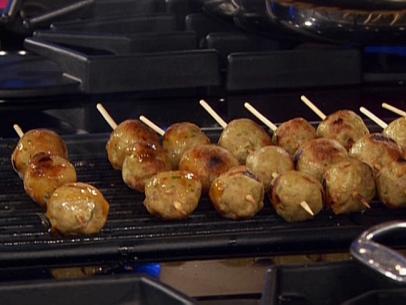
Recipe courtesy of Erika Nakamura
and
Jocelyn Guest
Yakitori Chicken
Getting reviews...
- Level: Advanced
- Total: 1 hr
- Active: 30 min
- Yield: 9 skewers
In America when we think of whole animal barbecue, we often think of whole hog. But in many other cultures you'll find that other animals take center stage. You may be familiar with Korean barbecue, which highlights beef in an extraordinary way. Japanese culture takes a similarly wholistic approach to utilizing the entire animal, looking at chickens through a detailed and refined lens. I love preparing yakitori because it challenges my skills in precision. Someone once told me that the act of preparing yakitori is the highest form of adoration towards the person who gets to enjoy it, as it is a true labor of love.
- Level: Advanced
- Total: 1 hr
- Active: 30 min
- Yield: 9 skewers
Ingredients
Directions
Special equipment:
meat grinder; 9 square wooden skewers; yakitori grill/binchoton grill with binchoton coals- Debone the drumsticks, including some of the cartilage. It's important to keep these components very cold. Place the meat along with the soft bone and meat grinder parts into the freezer for 20 to 30 minutes.
- Progressively grind the meat and soft bone on a 1/8-inch plate. Grind directly into a stainless mixing bowl set on top of an ice bath to keep the mixture cold.
- Add the minced onion, panko, salt and pepper to the meat mixture. Using a gloved hand, incorporate all the ingredients while mixing with vigor. The mixture should become sticky as the naturally occurring niacin is activated from the mixing motion. Immediately chill the mixture in the refrigerator.
- The skewers I use are square, so if the meat is loaded onto the sticks in a centered way, they should sit stable when resting on each side. If the weights are not evenly distributed, they will have a tendency to slip so the heavy side faces down – I tend to use other skewers as supports, so a little bit of over-crowding can work to your benefit.
- Divide the mixture into even 1 3/4-ounce (50g) portions, them form them along each skewer, working the meat lightly in your hands from the point of the skewer downward. Slightly wet your palm while shaping for cleaner results.
- The grill should be prepared high heat on one section, and much cooler on another section. This will allow quick searing as well as slow rendering of fats without flares of flames. Further, binchotan charcoal tends to snuff out when too much rendered fats drop on to it, causing more complications. Having a cooler section allows for a more intentional and thoughtful grilling process!
- Each skewer takes different lengths of time to grill, and how you build the coals into the grill, the atmospheric temperature and direction of wind will all contribute to slowing the cooking process down. During optimal conditions, the skewers should take 2 to 3 minutes tops to cook through, turning as the meat browns.
































